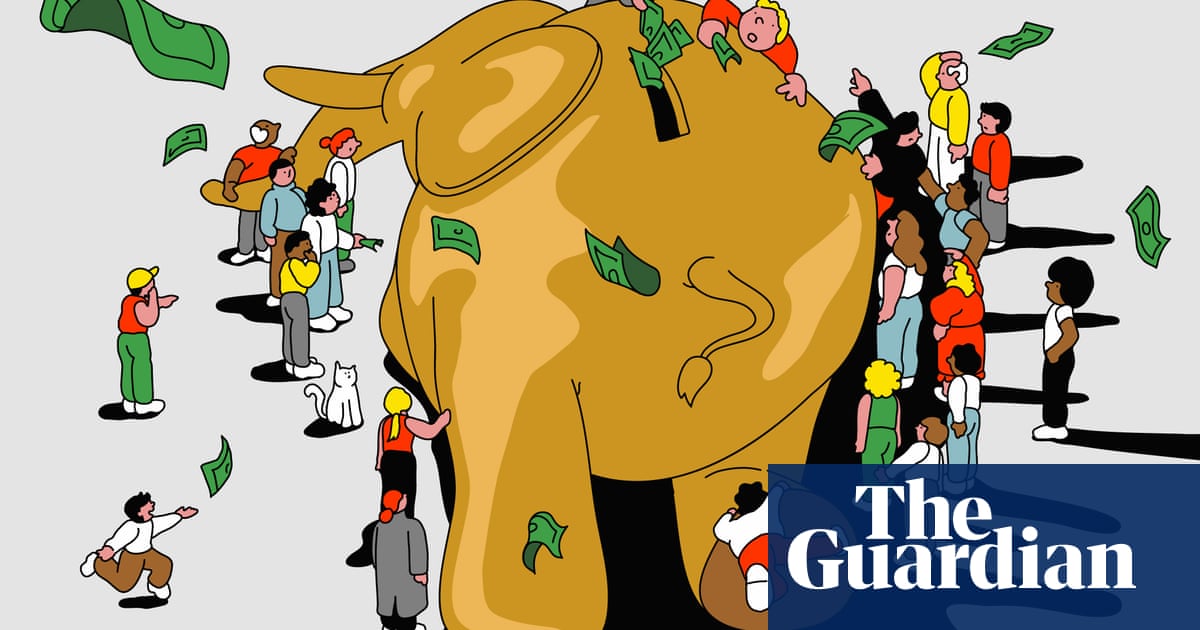
I’m going to try to convince you that you should care about exactly how many people watched the moral panic-inducing hit Netflix series Squid Game. Yes, I know there’s a lot going on in the world. But bear with me: I think this really matters regarding how we understand our culture – and the balance of power in a media business where data is king.
(As a treat, if you stick with this newsletter then further down I’ll tell you about some of the biggest flops that Netflix would prefer you didn’t know about.)
In the past it was simple to find out how many people watched a popular television show. Audience figures for traditional television broadcasts have been produced in a similar way for decades. Research companies recruit a group of households considered to be statistically representative of the general population (in the UK this is done by Barb, in the US by Nielsen) and then their viewing habits are monitored, often using a box attached to their television set.
This data is then processed and used to produce industry-standard television ratings that can make or break careers. Journalists love these figures because you can make narratives out of them! It’s why you see headlines in news outlets about how half of the UK watched a football match, or how no one watched a new rightwing news channel.
These figures are made public, in part, because commercial television channels have advertisers. And advertisers need to know their adverts are actually being watched, so they need reliable and trustworthy numbers produced by a third-party organisation. Sure, this survey system is flawed, but broadly speaking it is equally flawed for everyone. You can tell if a programme on BBC is much more popular than a show on ITV, and you can tell if a particular drama massively outperformed what you’d expect.
Enter Netflix
Then Netflix and subscription streaming services came along. They don’t have advertisers. Their aim is to hook, retain, and encourage customers to keep using their service until it becomes so ingrained in their lives that they can never stop paying their monthly subscription fee. Core to working out how to do this is the data they collect on you.
Because Netflix knows exactly what shows you watch. They know how many seconds you lasted with each programme, when you got bored, what you put on instead when you got bored, and exactly what time of night you were watching that smutty foreign series. And it’s really not in Netflix’s interest to share this information with journalists, their rivals, or with the people who make the shows.
Which brings us back to the original question: How many people watched Squid Game? And why does it matter?
Well, if you believe Netflix, who occasionally drip-feed out positive ratings stories when it suits them, by last night Squid Game had been watched by 142 million households, making it one of the biggest hits ever.
But we’ve only got Netflix’s word to go on for that figure. And even then, Netflix currently defines a viewer as someone who watched the first two minutes of a show’s opening episode. Did you put Squid Game on for a few minutes to check out the hype then get bored? Well, you might be surprised to find you’re counted to be just as much a “fan” of the show as someone who watched all nine episodes back-to-back.
Journalistically, it’s a challenge. We end up having to accept Netflix’s word for the figures they provide because there’s simply no other option. It also enables the streaming outlets to selectively publish the narrative that they want to construct. It’s sexy and cool to trumpet your investment in high-end original drama. (And hell, Netflix really is investing incredible sums in high-end original drama!) It’s less sexy to admit that your critically acclaimed show was a ratings flop and people just want to watch endless repeats of Grand Designs.
What’s more, it warps our perceptions of audiences and what is popular in culture. Is a Netflix drama more popular than a BBC drama? Possibly. This may have enormous implications for the future of whether we still need the licence fee. Does the public really engage with Oscar-nominated state-of-the-nation films or secretly sit there watching another Adam Sandler release? With the culture wars grinding on, it’s probably worth knowing. What are the truly unifying television moments that bind a society together? It’s hard to be sure. Because we can’t get the data out of Netflix.
The truth is out there
Except … one small family business based in Bristol has worked out how to do just that. The staff at Digital i, an analytics firm, realised that while Netflix won’t release viewing figures, it does release data to members of the public about their personal viewing history.
(It’s true, you can see an overview of your recent Netflix viewing history, or you can download every bit of data that Netflix holds on you by visiting this link. In my case, it reveals that I was really binge-watching an awful lot of episodes of The Good Wife in 2015.)
Digital i realised that if they could convince thousands individuals to willingly hand over this personal viewing history in return for a small payment, the company can effectively create a statistically rigorous survey panel, then use this to create audience “ratings” for Netflix shows and sell this data to rivals. At the moment they have users signed up in five major European countries but they hope to expand globally.
“We’re trying to level the playing field for Netflix competitors,” said Sophia Vahdati from the company, who says their customers include the likes of BBC and ITV.
Her company has shone a light on one of Netflix’s biggest secret: how much of their audience is viewing endless repeats of old shows, because people binge high-profile original series in such a short period of time.
“The biggest thing that isn’t mentioned in the hype is how important sitcoms are to retaining Netflix subscribers,” she said, highlighting the availability of Brooklyn 99 and Big Bang Theory as just as core to Netflix’s offering as their buzzy acclaimed shows.
Here’s some of the findings of their Digital i’s data from its UK audience research that she shared with the Guardian:
British Netflix users spent more time watching old episodes of Friends in 2020 than watching big-budget original series the Crown.
The three most popular new releases in the UK during August were Clickbait (watched by 2.34m Netflix accounts), Hit & Run (2.1m households), and The Chair (1.64m). These are high ratings but Channel 5 can top them.
Sex Education Series 3 was released on the same day as Squid Game and performed just as well in Europe – but has had a fraction of the hype.
Shows such Bridgerton, Afterlife and The Queen’s Gambit were all hitting over 80% completion rates in the UK – meaning people were hooked and watched to the end of each series.
At the other end of the market, the five shows with the worst series completion rates were The Dark Crystal: Age of Resistance (just 35% of viewers finished it), What/If (45%), The Irregulars (53%), White Lines (56%), and Sex/Life (56%) – which explains why most of them were cancelled.
Any film that is watched by the average viewer to 70% of the film’s runtime is considered a success. Martin Scorsese’s big-budget much-hyped Irishman? That struggled, on their metrics.
People now watch original series in a very short space of time – about a quarter of people who watched Squid Game finished it within two days.
Even though Netflix and Amazon Prime Video are not far apart in terms of signed-up users, Netflix dwarfs Amazon when it comes to people actually watching their content.
Oh and almost no one chooses to watch the credits nowadays. Sorry to everyone who made the programmes, we’ve already autoplayed the next episode.
So why does all this matter?
A lack of transparency changes the balance of of power when it comes to small companies negotiating with a global giant such as Netflix.
One independent producer who sold a film to Netflix suspects their release performed well, based on online reaction. But they told me that they just don’t know: “Netflix doesn’t usually give producers information about viewing figures of films they made – which is both frustrating and very disempowering for producers trying to negotiate funding for the next one, with them or anyone else.”
And for Squid Game? Digital i reckons 79% of Europeans with Netflix on their research panel that started to watch the programme watched a second episode within a fortnight – with half making it all the way to the end in that time. So it really is a massive hit. Just perhaps not quite as big as Netflix’s own figures would suggest.
Last night, the streaming company announced that they would slightly change the metrics they use and drop the “two minutes watched” measure in favour of total hours watched. But it’s still in the company’s gift when they make the information public.
Vahdati says her company’s data shows how the streamer can selectively release data to shape the narrative about their output: “The originals are punchy, sharp and aesthetically innovative. But at the heart of it we haven’t become a nation who like to be challenged all the time with foreign-language dramas.”
Oh – and if you’re one of the many Squid Game viewers, then no spoilers please. I’m still only two episodes in.
If you want to read the complete version of this newsletter please subscribe to receive TechScape in your inbox every Wednesday.
This article was amended on 20 October to clarify two statistics provided by Digital i regarding the number of Europeans watching multiple episodes of Squid Game and how many viewers watch films in their entirety.












